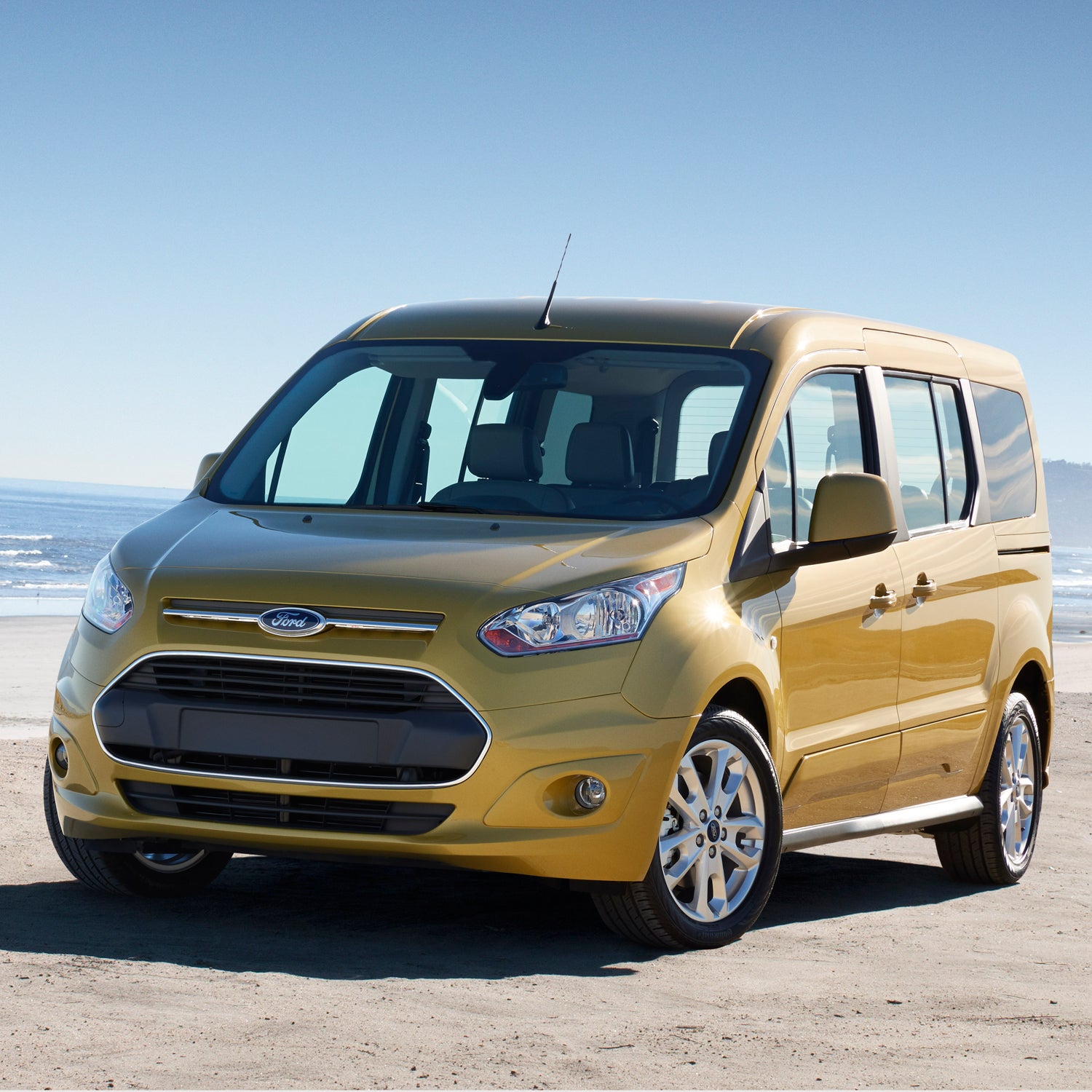The Sell: A European-built Ford Minivan gets imported stateside.
The Test: The third row in most full-size SUVs is cramped and difficult to clamber into. That’s not the case in Ford’s new seven-passenger ($29,000; 20 mpg city/28 hwy), which has ten more inches of backseat legroom than the Chevy Tahoe. Every single row in the Ford has enough headroom for a six-foot-tall passenger (46.9 inches of headroom for the driver is probably enough for a seven-footer), and you still get a combined 5mpg better fuel economy than the Tahoe.
The Ford even carries more stuff: although it’s 14 inches shorter than the Tahoe is, it can cart a massive 104 cubic feet of gear (with the two backseat rows folded flat). We stopped counting at five mountain bikes (because we ran out of bikes), but easily could have loaded more. Even with four passengers aboard, that insanely tall roof left room for three pairs of skis and a snowboard, as well as boots and luggage.
True, you can’t tow a boat with your Transit Connect LWB like you can with a big SUV, but for everyday duties, Transit Connect, with its Ford Focus chassis, is a much easier rig to drive. Handling isn’t sporty, but site lines for parking and driving in traffic are superb.
The default front-wheel drive provides better grip in the snow than the RWD base option found on many truck-based SUVs. Sure, we’d take more ground clearance, but 6.6 inches is more than most cars (and many minivans) have.
Bonus: Spring $300 for the heated front windshield with invisible wires in the glass and you’ll never scrape ice again.
What’s Missing: The 2.5-liter four-cylinder engine can feel taxed when you cram your crew in this bread van. It’s not a deal breaker though, particularly considering the sticker.
The Verdict: It’s the second coming of the VW Vanagon. But it’s way more reliable, fuel efficient, and practical than the old classic.


